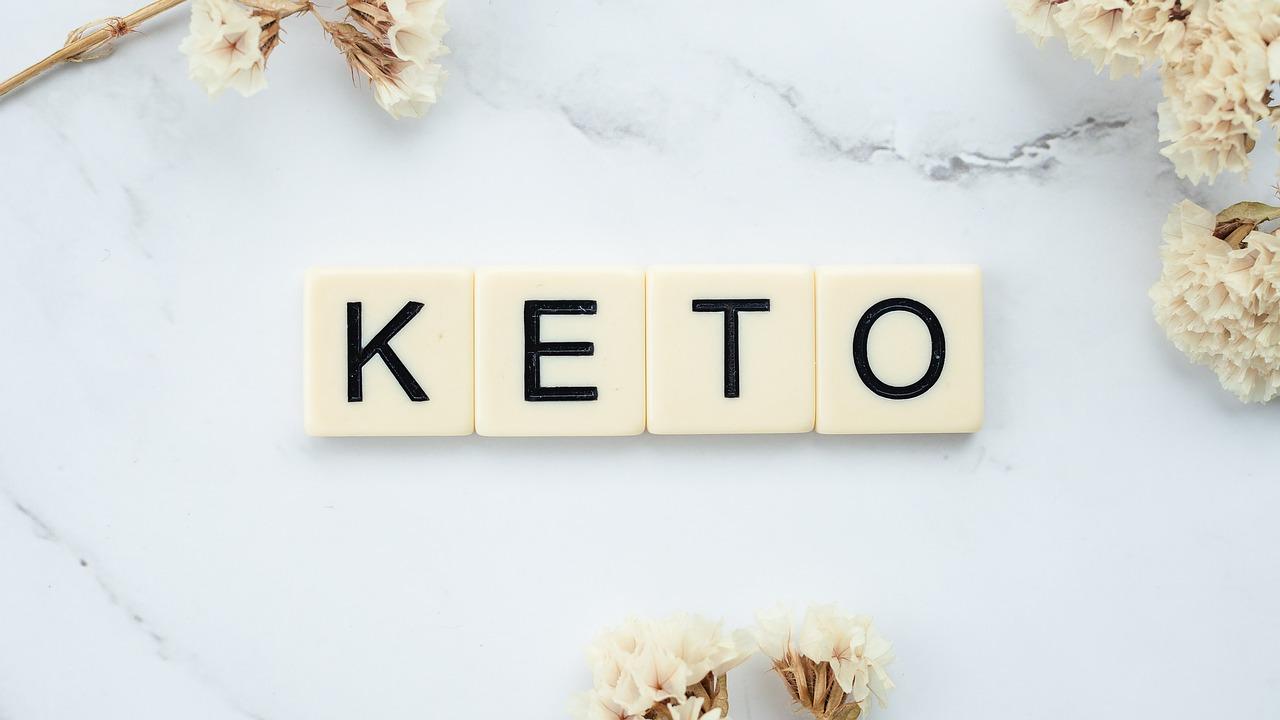If you are ambitiously following a true Keto lifestyle, you know the challenge of finding satisfying meals that are low in carbs. It’s much easier to fall into the trap of eating the same, repeated things, but trust me, your keto meals don’t have to be as boring as you thought they were! Salads are way too incredible to keep things fresh, flavorful, and packed with nutrients, all in all, while staying within your carb limits.
But let’s be completely honest with ourselves: when people think of salads, they often think about a bowl filled with green colors or maybe a depressed bowl of iceberg lettuce. That’s not what we are looking for here today; it is wit. Such keto salads are vibrant, hearty, and full of healthy fats, protein, and crunchy textures that will make you forget that you are even on a diet. So, if you are looking for a quick snack or a light lunch that ticks all the macros, there is something here for every single one out there to satisfy your taste buds and their cravings.
So, without any further ado, grab your fork, and get ready to dive into these 10 mouthwatering keto-friendly salads, which prove that eating healthy can be anything except for being dull, because at Baskits, it’s more than just a place that provides gifts for special occasions.

Image via Pixabay
What is a keto diet exactly?
Okay, so before we directly jump in, we shall know about the basics (at least) to grasp the best out of our knowledge. Isn’t that the right way to do it? Well, the Ketogenic diet is often called keto, a high-fat, low-carb eating plan that is made to help your body enter a state called ketosis. In ketosis, your body performs incredibly well at burning fat for energy instead of relying on different carbohydrates. Instead of getting energy from glucose, which is usually found in bread, pasta, or sugar, your body turns it into fat and produces different ketones in the liver to use as fuel.
A standard keto diet typically consists of about 70-75% fat, 20-25% protein, and just 5-10% carb, which means that bread, rice, potatoes, and sweet snacks are off the chart. But on the other hand, foods such as eggs, cheese, meat, nuts, avocados, and low-carb veggies are a plus staple.
It might sound a bit reserved at first, but once you get into a rhythm, it becomes much easier to manage, and the variety of yummy meals makes it much more enticing and enjoyable than you might think.
What are the benefits of a keto diet?
People turn to the keto diet for reasons that we can’t even tell you about, and the benefits go beyond weight loss. One of the main reasons why it has been so popular is just how effective it is when it comes to shedding extra pounds, often without feeling deprived or being hungry constantly. Since fat and protein are more filling than carbs, keto meals tend to keep your tummy full and satisfied for a longer period, which makes it much easier to cut back on snacking.
However, weight loss is not the only benefit. Many people report having steadier energy throughout the day when on the keto diet. Because you’re not spiking and crashing based on sugar and carbohydrate intake, a person’s energy will be more consistent, and the midday slump might cease to be an issue. Ketosis can enhance mental clarity and focus for some.
Ketones are a more efficient fuel source for the brain, which probably explains why people notice that they can concentrate better and think more clearly in ketosis. For others, adopting a keto lifestyle is about normalising their blood sugar.
Reducing carbohydrate intake leads to fewer spikes in blood sugar, which is beneficial for people with type 2 diabetes or insulin resistance. Let’s not neglect to mention the potential for improved heart health: it seems counterintuitive to some, but many who follow a higher-fat diet find that their triglycerides drop, their HDL (the good) cholesterol increases, and levels of inflammatory markers drop.
As with any diet, results can be different for everyone. It’s always suggested to talk to your doctor or nutritionist before making any significant changes to your diet. But
But if you are looking for new ways to boost your energy, trim down body fat, and enjoy a menu that is crafted with full flavors, satisfying meals such as Keto can be worth trying out.
So, without any further ado, let’s see those 10 delicious keto salads, which are more than just a boring bowl of green iceberg and lettuce.
1. Classic Cobb Salad with a Keto Twist
Starting list with the most top-tier and timeless piece, the Cobb salad, a dish that knows how to satisfy your taste buds. To keep things keto, we are skipping any high-carb dressings or croutons and loading up on the good stuff instead. Just think about the crisp romaine, grilled chicken, creamy avocado, chopped and hard-boiled eggs, cherry tomatoes, bacon bits, and crumbled blue cheese.
Combine it with a homemade ranch or a blue cheese dressing that is made without sour cream with Greek yogurt, and you have got a high-fat, protein-packed meal that hits all the right notes at the right time!
What makes this salad so yummy and satisfying is the balance of textures, crunchy greens, creamy avocado, and the smoky chew of bacon. It’s perfect as a main dish for lunch or dinner and keeps you full without feeling too stuffed and full.
2. Creamy Avocado Egg Salad
Egg salad on its own is already a great keto option to go with, but when you add an avocado into the mixture, it notches up the game even more. Avocados bring in that extra richness and enhancement to boost your healthy fat intake, which is a major win on keto. Instead of using mayo, you can try mixing mashed avocado with a little bit of Dijon mustard, lemon juice, chopped boiled eggs, and green onions.
This salad tends to be much more creamy, zesty, and super-satisfying. You can enjoy it on a bed of spinach or romaine or even try scooping it up with keto-friendly crackers or cucumber slices. It’s the kind of salad to go with that is quick to make and quick to whip up, which feels more like comfort food without any additional carbs.
3. Spicy Thai Chicken Salad
This one’s for all the flavor seekers out there: a Thai-inspired chicken that brings out the bold spices, crunchy textures, and a tangy dressing that makes your taste buds go wild. Simply start by shredding grilled chicken breast and tossing it with the shredded cabbage, cilantro, mint, sliced red peppers, or maybe chopped peanuts or almonds for an extra crunch.
The real magic begins with the dressing. Combine lime juice, sesame oil, fish sauce, a little bit of keto-friendly sweetener such as erythritol, and chili flakes if you like to go with flavors full of spices. This salad tends to be more refreshing and fiery, with enough ingredients to be able to make a meal on its own. If you want to lower the flames, just tone down the chili and let the herbs and tang do the rest.
4. Zucchini Noodle Caprese Salad
Zoodles, or zucchini noodles, are a true keto favorite, and they make an excellent base for this fresh, Italian-inspired salad. The classic Caprese combination of mozzarella, tomatoes, and basil is already keto-friendly in moderation, and when you mix it with spiralised zucchini, you get a salad that’s light, summery, and way more satisfying than the rest.
Blend everything well in olive oil, a splash of balsamic vinegar, and a sprinkle of salt and pepper. Add pine nuts or a few olives if you want to bulk it up a little. Perfect for occasions such as a potluck, a picnic, or a light dinner on a warm day.
5. Tuna Salad Lettuce Wraps
Now, this might sound basic to you, but with the right twist, it becomes a true keto powerhouse. Start with high-quality canned tuna packed in olive oil. Mix it with mayo, chopped pickles or capers, or celery, and squeeze it up with lemon juice. Instead of loading it onto bread, spoon it into crisp romaine or butter lettuce leaves.
It’s quick, time-saving, flavorful, and convenient to make. You get the satisfying richness of tuna and mayo, the crunch from the veggies, and the freshness of the lettuce wraps. Also, it’s endlessly customisable. As per your taste buds, throw in diced boiled eggs, chopped up olives, or maybe a handful of shredded cheese if you are feeling a bit extra to go with. A great way to score much more than you have anticipated.
6. Grilled Steak and Arugula Salad
Okay, we agree, sometimes you are just looking forward to a simple salad that tastes like a meal. Allow us to introduce the grilled steak salad. Start with a bed of peppery arugula and a pile of slices of juicy and tender grilled steak. Add shaved parmesan, cherry tomatoes, and thinly sliced red onion.
The dressing is simple yet elegant: just olive oil, lemon juice, garlic, and a dash of Dijon mustard. You can go with a bit of red wine vinegar if you want more flavor. This salad is a perfect match for a bold, beefy, and seriously satisfying dish for those who are craving something hearty but still want to keep things keto.
7. Keto Greek Salad with Chicken
We are sure that you must have heard about the Greek salads, which are naturally low in carbs and big on flavor, a reason that makes them on the list. Let’s say you take a traditional combination of cucumber, red onion, and olives, and then you add in some grilled or roasted chicken breast for extra protein.
The dressing couldn’t be any easier than this: olive oil, red wine vinegar, oregano, garlic, and just the right amount of lemon juice. You can even go ahead and prepare this one in advance and stack it up in the mason jars for your convenience on the go throughout your busy week. It’s salty to the right, tangy, and exactly refreshing, to where you expect it to be to keep things interesting.
8. Cauliflower “Potato” Salad
You might be missing out on a lot if you haven’t looked at this one. A classic potato salad on keto- this one’s for you. Cauliflower makes an excellent stand-in for potatoes; it’s tender, mild, and soaks up the entire flavor correctly. Roast them up or steam cauliflower florets until they are tender, then toss them with chopped hard-boiled eggs, celery, red onion, pickles, and a creamy dressing made from the mayo and apple cider.
There is no denying the fact that this salad tastes like the real deal and makes a great side for BBQs, picnics, or even if you are looking forward to having juicy burgers. It’s also surprisingly filling, thanks to the fiber in cauliflower and the protein, which is derived from the eggs. What’s the bonus? It gets even much better the next day when the flavors are embraced together.
9. Spinach, Bacon, and Warm Mushroom Salad
Warm salads don’t always get the love they deserve, just like a middle child, they’re always neglected and never looked upon. But this one surely stands out. Baby spinach serves as the base, and with just a slight underheating of the warm sautéed mushrooms and crispy bacon, you get the perfect balance and combination. Try adding a handful of shredded cheese, such as goat cheese or Parmesan, and you have got yourself a rich, savory meal that is full of umami goodness.
Make a simple and quick warm vinaigrette by merging some of the bacon drippings with the Dijon mustard, apple vinegar, and a little bit of garlic. Pour it on the salad while the mushrooms are still hot for maximum flavor. It’s indulgent in the best way possible and makes your carb intake completely fulfilled without breaking the bank.
10. Avocado Shrimp Salad with Lime Dressing
Jot down our list with a fresh, tropical note of a shrimp and avocado salad, which sounds as pretty as it is. Shrimp is low in carbs and high in protein, and when paired with the buttery avocado and a zesty lime dressing, it creates a nicely balanced dish.
It is tossed with cooked shrimp with diced avocado, chopped cilantro, cucumber, red onion, and jalapeno for a little touch of spice. You need to squeeze over a fresh lemon juice, which is then drizzled with olive oil, and season it perfectly with salt and pepper. It’s like a very deconstructed ceviche with a little creamy twist, and it works well for lunch as it does for a fancy dinner.
Why are salads a perfect fit for the keto lifestyle?
Whenever you think about keto, salads might not be the very first thing that gets you excited, but since they play a pivotal role, they should be! They are one of the most flexible and customisable meals you can make while keeping your carbs in check. With the right ingredients, salads can go from side dish to the main full-on event, an easy way to load up on fats, protein, fiber, and a ton of flavor without relying too much on the starchy fillers.
Now, what makes salads a true keto star is how flexible they are. You can easily switch up the greens, pick up your favorite protein, and just toss it around with cheese, avocado, nuts, or seeds, or top it off with a rich, creamy dressing. No rules, just good eats.
And most importantly, let’s not forget how quick and convenient they are. Let it be you prepping for the week or throwing together a last-minute lunch; salads are super easy to go with and need minimal cooking.
Following up on the keto diet: is it worth it?
A keto diet doesn’t mean having an endless amount of bacon and cheese or, worse, blended salads that make you miss your old favorites. Such keto salads are packed with bold flavors, rich textures, and wholesome ingredients that make every bite so lively to count on. So, if you are after something light, refreshing, rich, or hearty, our detailed keto guide has your name on it.
The best thing about it? You can mix, match, and potentially modify these salads to fit your buds or your macros. Add nuts for an extra crunch, swap proteins, or maybe just try switching up the greens. At Baskits, we are more than just a brand that provides gift sets and baskets for different occasions. With our curated list, keto eating can be flexible and fun once you find the correct rhythm. So don’t be shy to get creative in the kitchen.
So here is to the salads that don’t suck, and to keep your keto joruney as tasty as possible. Salud, mi familia!







